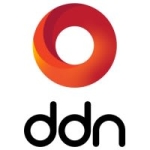Cost: it's a lot cheaper. It's a lot cheaper than what the other vendors have for the same type of environment. It saves us money.
The ease of use is the most valuable feature; something that we can use for a flash and all-flash type of environment that we can really put a heavy workload on. It gives us an environment to where we can really push a lot harder. We have multiple vendors in our establishment. We have NetApp, EMC, IBM, HP; we have pretty much all of them.
We do a lot of in-house, application-dependent type things, where we find the different niches to the different things. Certain things they do better. We've found that it actually does very well on some of our higher-end applications.
I would like to see a way for NetApp personnel that are used to the FAS and the CDOT systems, to be able to easier translate that experience and knowledge into using the EF series. There are some differences in there and it will throw off, when you're trying to train somebody, as far as bringing in somebody new into the group. When they're supposed to be responsible, it's another technology for them to try to learn. Something that would help port that process; make them similar in how the manageability of it is functioned.
Obviously, everything can be improved on so I won't ever give anything a perfect rating. But as far as the manageability, being able to port between the two and have to do less training in-house from a customer point of view, that would be the part to improve.
We have not had an outage with it yet. Other vendors, we have. We've had an actual high-end frame completely go down on us.
We haven't done too much with scalability yet in our environment, so I don't really know. From my point of view, I can't answer that one.
I have used technical support but to me tech support for the EF is the same as the tech support for the rest of the NetApp environments: pretty quick, pretty easy. It's a lot more fluid.
I requested it, but I didn't make the decision.
We knew we needed to invest in the EF series mostly because we have a lot of files, we have some CDOT systems that we have in there with the 8060s right now, and we knew that we had some environments where we're looking at XtremeIO and so on. We were trying to find something comparable to it and, honestly, within our company, there wasn't a whole lot of knowledge that there were more options.
I brought it up and said, "Hey what about these guys?" And they said something like, "Oh, they don't have it." And here it is. That was what brought it in. We were using XtremeIO and I wanted to move over to this, because of cost.
XtremeIO, when it got bought out by EMC, the cost went up and the support model for EMC is the same across all products. However, now it's even more, because you have to call EMC and then EMC points you over to a third party and it's troublesome.
The advantage of XtremeIO is the GUI system, which is extremely easy. It really is. It's based off of almost like the old XIV. The XIV system from IBM was an extremely easy GUI, just slide. It's almost like using a Windows system and they kind of ported that into the XtremeIO, which made it easier for that as far as the manageability side of it. However, as far as flexibility, it didn't have a whole lot there.
Besides NetApp and XtremeIO, we brought another one in-house and it didn't make it through the first stage. We pushed it and actually crashed it. You shouldn't see a flash crash but we did.
Reliability is the most important criteria for me when selecting a vendor to work with.
I was involved in the initial setup; I helped built it out in the lab.
We normally have the vendors come in and actually do the physical build-out of the systems themselves but then, once they start doing the next part, which is the configuration, they bring us in, it's simple. It was very simple. There wasn't a whole lot for us to do.
Make sure you truly test the possible solutions one-on-one against each other and not just let the vendor tell you the answer. A lot of times, their answer is dependent on the criteria that they use to give it.










